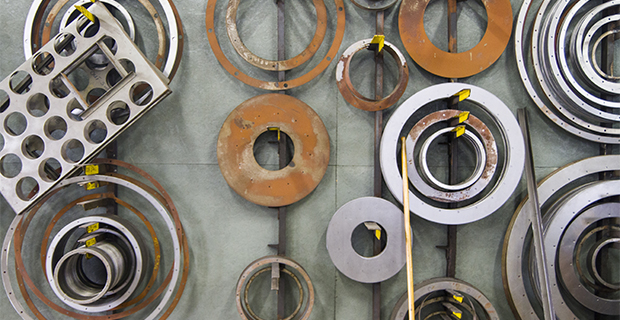What You Need to Know about Baghouse Differential Pressure
Utilizing baghouse filters (shaker-type) in the workplace is a great way to efficiently eliminate dry dust from the air. A baghouse filter (shaker-type) typically has a life expectancy of about 10 years. To ensure that you’re getting the most out of your dust collection system, it’s imperative that the baghouse differential pressure is checked regularly. What exactly is differential pressure? The following will explain important factors that you need to know about the subject.
What is Baghouse Differential Pressure?
Baghouse differential pressure, also known as pressure drop, is a critical indicator of how efficiently your dust collector is working. Specifically, differential pressure is the difference between the air pressure on the dirty side of the filters and the clean side of the filters. As dirty air flows through baghouse filters, a dust cake builds on the filter media, creating resistance to airflow. If you notice that your baghouse differential pressure is higher or lower than normal, it could indicate a problem with the filters that that could decrease the efficiency of your dust collection system, and increase operational costs.
Low Differential Pressure
A brand new baghouse will have a pressure drop of approximately 0.5″ – 1.5″ water column. Over time, the differential pressure increases to a steady pressure drop, generally in the range of 2″ – 3″ water column.
Causes of High Differential Pressure
A pressure drop is considered particularly high if it’s greater than 5″ water column. A high baghouse differential pressure may indicate that there is a malfunction of the cleaning system (shaker), which needs to be corrected. It may also indicate that dust needs to be removed from its storage container(s) or hoppers, because it has backed-up into the filters. Wet particulate entering the baghouse can also cause an increase in pressure drop. Finally, incorrect filter media or baghouse sizing (air-to-filter ratio) can cause an excessive differential pressure drop.
What This Means for You
By regularly monitoring your baghouse differential pressure, you can ensure that your system is in “tip-top” shape! When you observe significant changes in the baghouse differential pressure, you know that it’s time to conduct a thorough inspection of the unit to determine what action(s) needs to be taken to correct problems impacting the high differential pressure readings. And, in order to monitor baghouse differential pressure, you MUST have a differential pressure gage connected to the baghouse.
About AGET Manufacturing Company
For more than 75 years, AGET has been designing and manufacturing some of the most durable and innovative industrial air filtration systems in the industrial market. Products include dust and mist collectors, in the form of cyclone units and afterfilters, downdraft tables, custom designed and fabricated collection hoods, and more. AGET dust and mist collectors are configured to meet NFPA standards for dust collection. To learn how AGET can provide your company with a custom clean air solution, call 1-800-832-2438, or e-mail sales@agetmfg.com.
